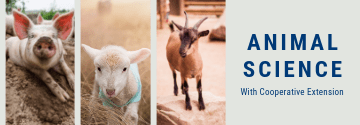 Health Problems With the Digestive System of Poultry: Tuesday, January 6, 2:00 pm EST
Health Problems With the Digestive System of Poultry: Tuesday, January 6, 2:00 pm EST
As the first in a four part webinar series on poultry health, Dr. Frame will start this webinar with an introduction to chicken health programs. The remainder of the webinar with discuss problems with the digestive system. The digestive system of poultry is exposed to a variety of pathogens on a daily basis. Dr. Frame will be discussing how some of these digestive-related diseases are manifested in poultry
Salmonella and Backyard Poultry Flocks: Tuesday, January 13, 3:00 pm EST
The summer of 2014 saw many cases of Salmonellosis traced back to backyard poultry flocks – see CDC website: http://www.cdc.gov/salmonella/live-poultry-05-14/index.html. Dr. Colin Basler of the Center for Disease Control and Prevention will be speaking about preventing salmonellosis while maintaining a backyard poultry flock.
Quality of Eggs from Different Production Systems: Wednesday, January 14, 11:00 am EST
When it comes to buying eggs for your family there are many different types to chose from – conventional, brown, white, green, free-range, cage-free, omega-3 enriched, pasture-raised. What are the differences between these eggs? Why do some cost more than others? Which type of eggs would you like to produce for sale. Dr. Jacquie Jacob from the University of Kentucky will be discussing this nutritious topic. Dr. Jacob is a poultry extension project manager with a heavy focus on small and backyard poultry flocks.
Health Problems with the Respiratory System of Poultry: Tuesday, February 3, 2:00 pm EST
The avian respiratory system of birds is very different from that of mammals with a rigid lung, air sacs and extends into the bones (Pneumatic bones). This is the second in a poultry-related health series looking at health problems associated with the poultry respiratory system.
Participation is free and brought to you by eXtension.org but requires a high speed internet connection. To participate, simply click on the link and enter the virtual meeting room as a guest. https://connect.extension.iastate.edu/poultry You will be asked to type in your name. You may want to attempt to join 5-10 minutes in advance of the start time in case you need to download an abode connect add in or update your software. These webinars are also recorded and made available through the http://www.extension.org/poultry website when you click on the small flock resource area.


